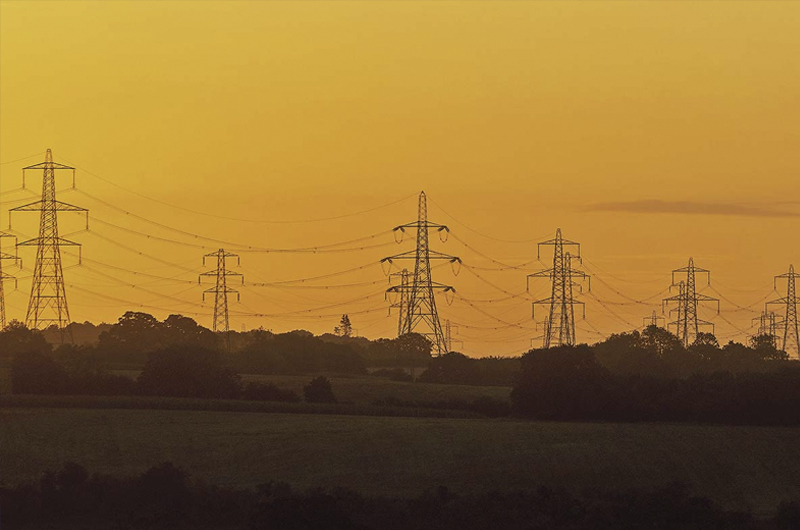On Wednesday, the Consolidated Assessment Report (ICE) was published with a favorable recommendation, leaving only the SEA’s executive director, Valentina Durán, to approve the project.
A key green light that puts the Kimal-Lo Aguirre mega-line on track to obtain its Environmental Qualification Resolution (RCA) was sealed on Wednesday afternoon. The Environmental Assessment Service (SEA) published the Consolidated Assessment Report (ICE) – which runs to 1,676 pages – with a recommendation for approval of the initiative that will link Antofagasta and Santiago and involves an investment of around US$1.5 billion.
The project, which will be the first to use high-voltage direct current (HVDC) technology in Chile and is a key initiative for decarbonization, is now ready for SEA Executive Director Valentina Durán to issue the RCA, which should happen in the coming days.
In this case, the project will not go through the Environmental Assessment Commission (Coeva) as it is an interregional initiative, which means that it must be approved by the Executive Directorate.
The mega-line, which will require more than 6,200 jobs during construction, is the largest project the Service has ever evaluated in terms of size. This is because it is a high-voltage power transmission line that runs for more than 1,346 kilometers across five regions (Antofagasta, Atacama, Coquimbo, Valparaíso, and the Metropolitan Region) and 28 municipalities.
The initiative, which requires processing almost 5,000 permits to be obtained during the months of construction, is expected to come into operation in the first half of 2029.
It has been highlighted that the project will have the capacity to transmit up to 3,000 MW of renewable energy, equivalent to a quarter of the daily demand of the National Electric System (SEN), giving it, according to the company, “resilience, security, and lower costs.”
For this strategic project, the SEA assigned a special evaluation team of about 20 people, including evaluators, specialists, and lawyers, joined by another 20 officials for citizen participation tasks.
When consulted by DF, the SEA highlighted that a rigorous and agile environmental assessment had been carried out, which was completed in exactly two years, with a 30% reduction in timeframes compared to the Environmental Impact Assessments (EIA) approved in 2025.
Project progress in the SEIA
On October 23, 2023, the company Conexión Kimal-Lo Aguirre submitted the EIA for the 1,346-kilometer mega-line. Since then, there have been significant milestones in the environmental permitting process.
Among them, on November 22, 2024, the company submitted the first addendum to the Environmental Impact Assessment System (SEIA), a document that responds both to the observations in the Consolidated Report of Clarifications, Rectifications, or Additions (ICSARA) presented by the state agencies participating in the process and to the observations gathered from citizen participation.
At that time, it had to respond to almost 2,600 observations, including those contained in the first ICSARA and those from citizen participation. However, it highlighted a slight adjustment to the length of the mega-line. While the original length of the project was 1,342 kilometers, 1,346 kilometers were proposed, associated with the installation of 2,691 towers.
On the verge of receiving the second ICSARA, one of the tracks that continued on its path was a new stage of citizen participation in the municipalities where the company made adjustments in its first addendum. According to the final report of the SEA’s PAC published on January 30 of this year, there were 231 observers in the citizen participation process for substantive modification. Adding up the observations submitted, according to the company’s estimates, there were 793.
In fact, the SEA carried out one of the most extensive citizen participation processes in its history in terms of territory, developing 183 activities in 32 municipalities, with the participation of 2,200 people who submitted 16,700 observations.
On July 23 of this year, the company submitted the supplementary addendum to the EIA (addendum 2), responding to the second round of requests for clarifications, corrections, and additions (Icsara Complementario). And, in early October, the SEA concluded the Indigenous Peoples Consultation Process (PCPI), which began in June of last year. Seven indigenous groups were consulted regarding significant impacts recognized.
During the process, the project received 43 statements with comments on the EIA and 28 with comments on the addendum. These were issued by 18 OAECAs (State Administrative Bodies with Environmental Competence in Chile) in six regions of the country.
